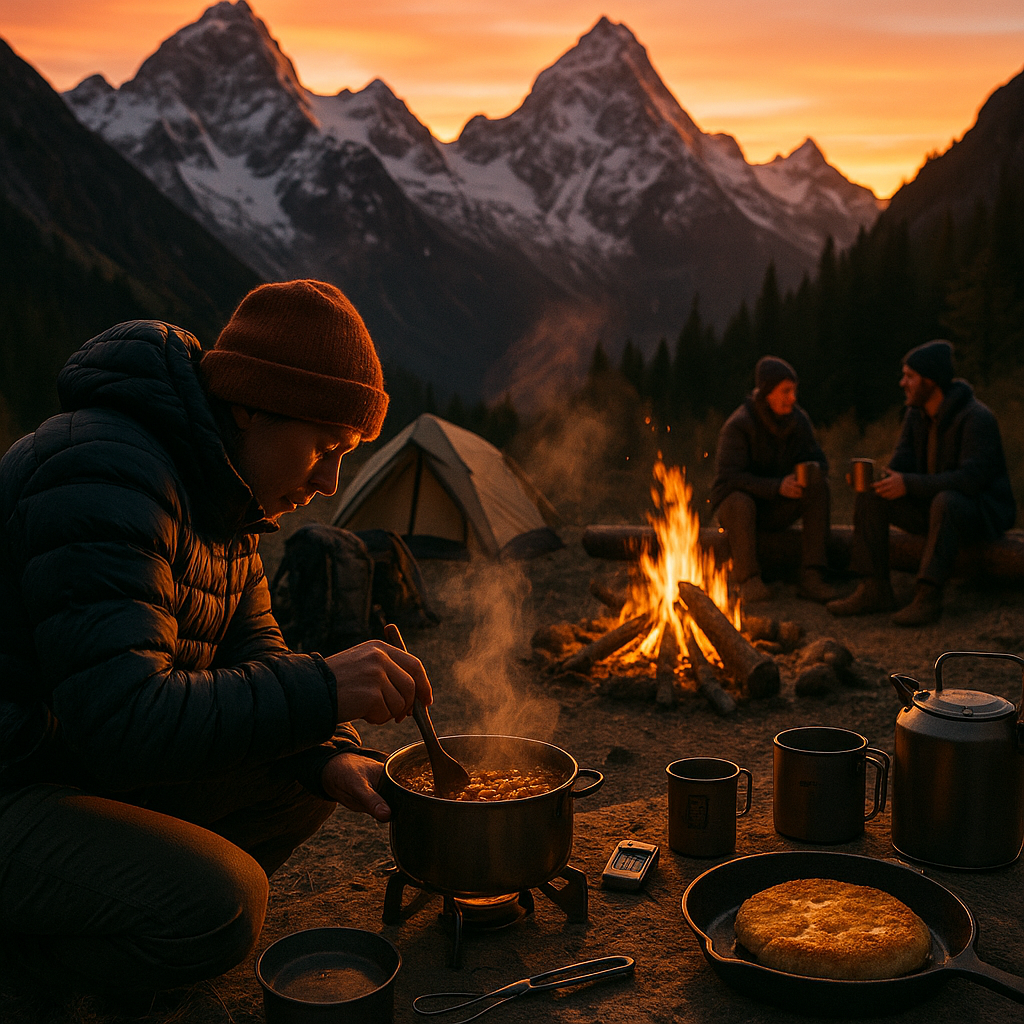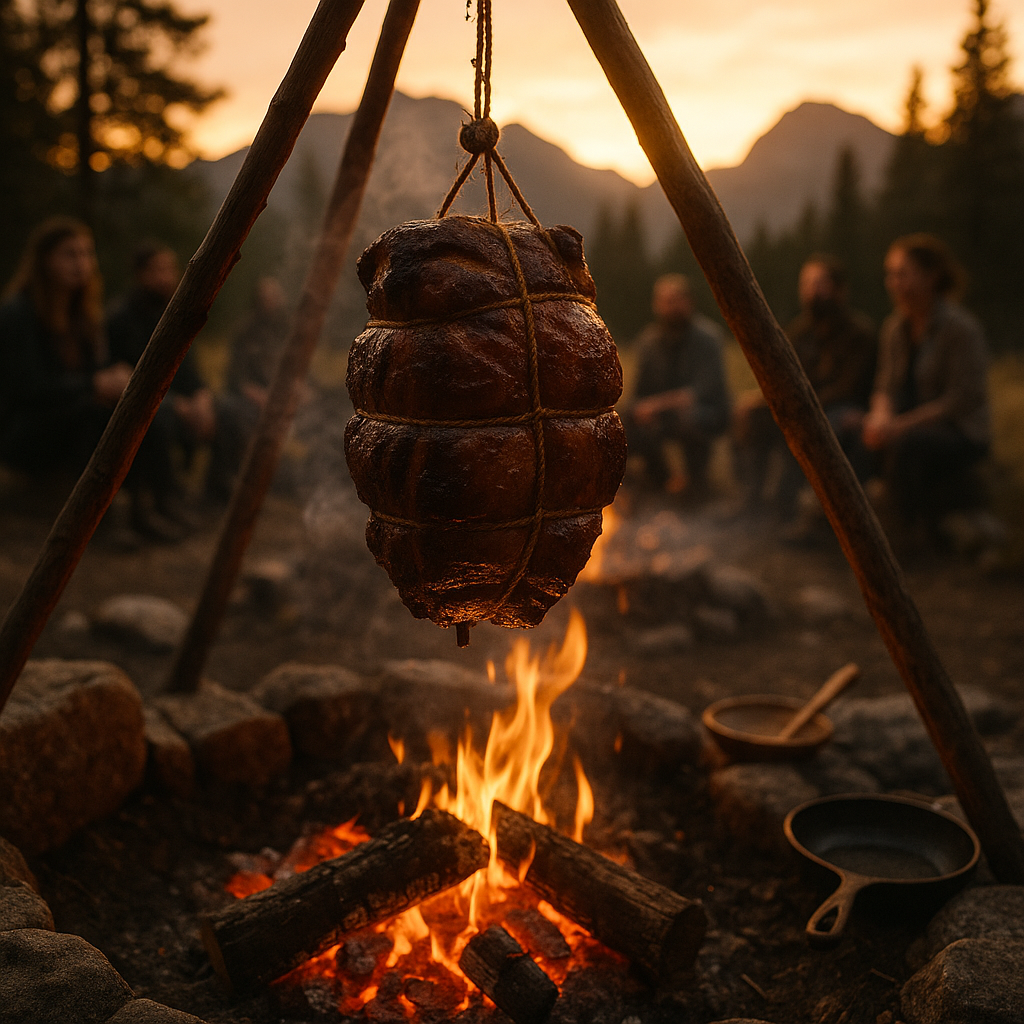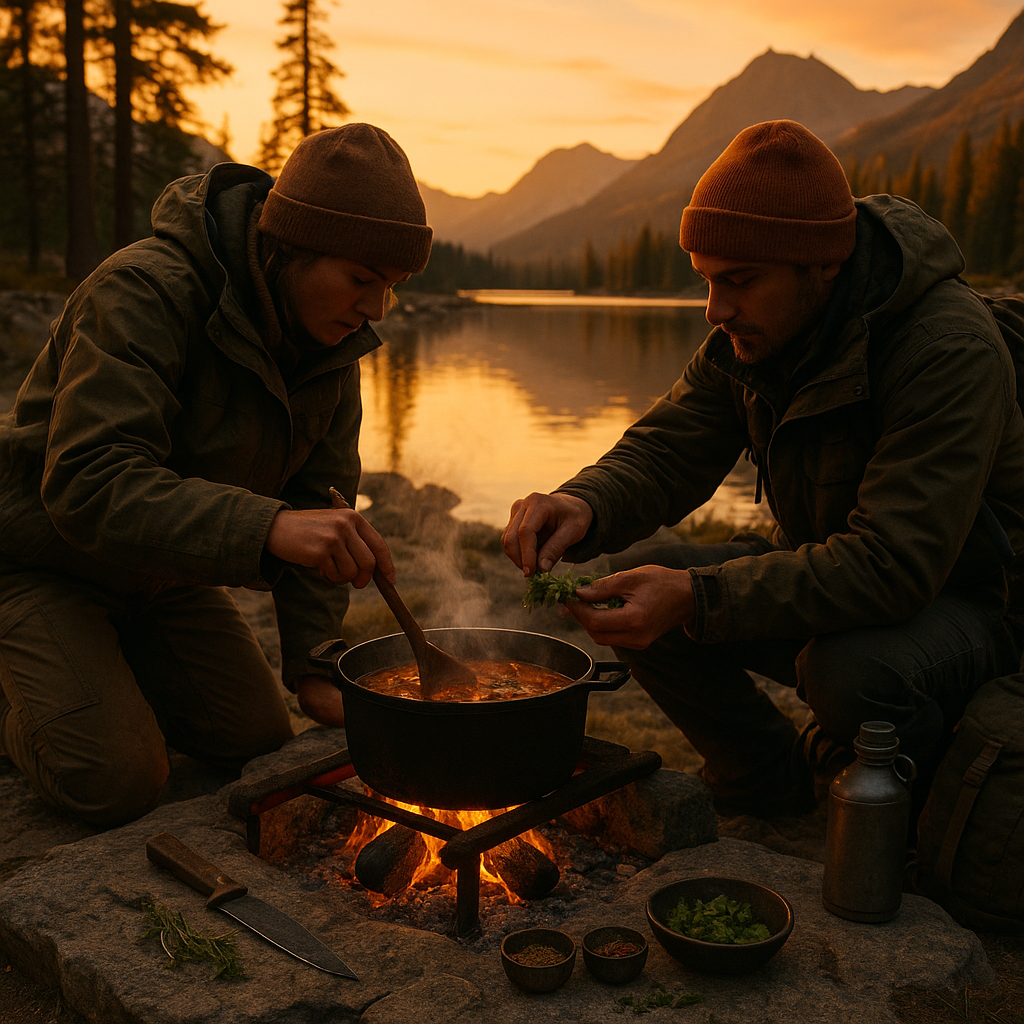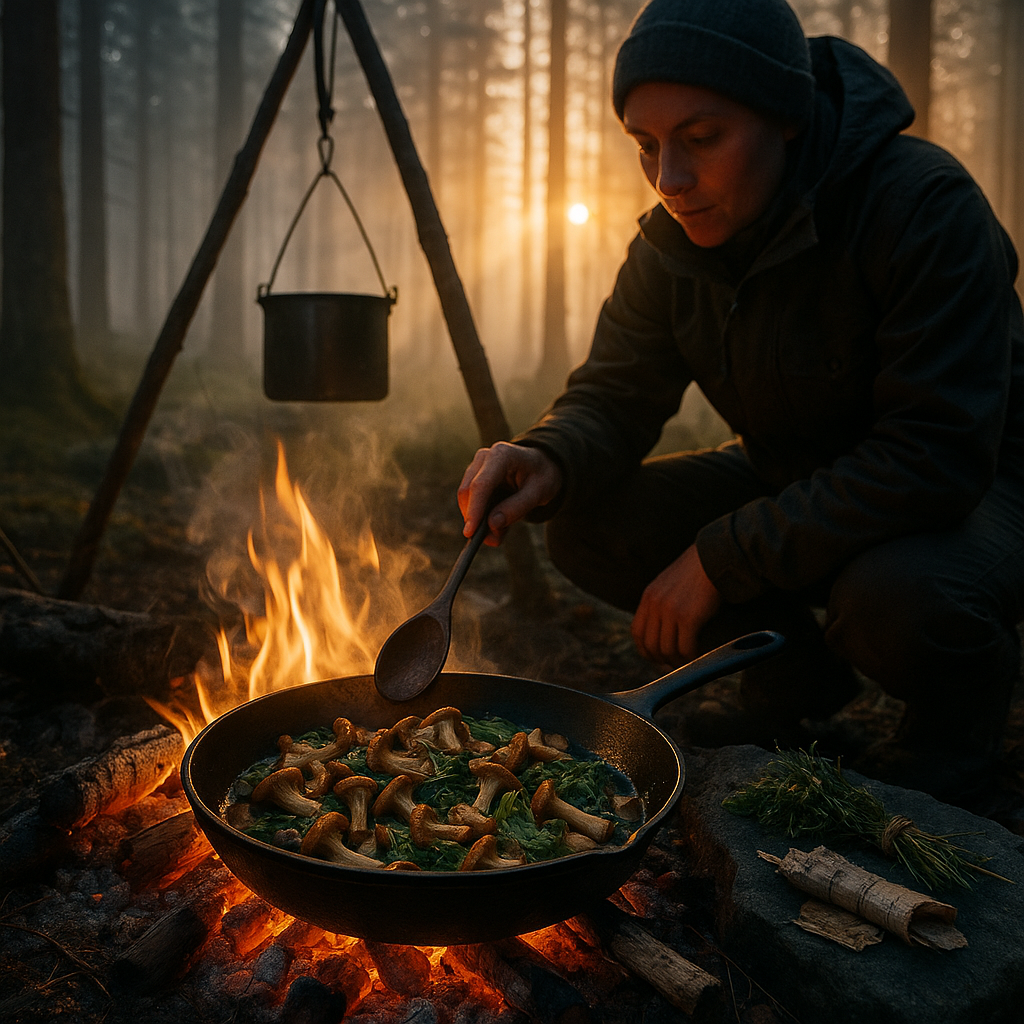Key Takeaways
High altitude cooking isn’t merely about adapting times and temperatures. It’s an invitation to awaken the senses and experience a deep connection with wild places. When you prepare meals above the clouds, every detail matters: the crispness of the air, the soft crackle of the campfire, the way ingredients transform at elevation. The following takeaways reveal the unique magic, challenges, and heartfelt rewards of crafting recipes in the world’s rooftop kitchens.
- Embrace the Unexpected: At higher elevations, even the most familiar cooking processes shift. Water boils at lower temperatures, bread rises in unpredictable ways, and timing relies more on instinct than on a watch.
- Nature Becomes Your Test Kitchen: Facing shifting weather and limited resources, you learn to improvise, adapt, and discover unexpected inspiration in the raw materials the wilderness provides.
- Simple Ingredients, Extraordinary Flavors: High-altitude air and the primal heat of open fire unlock new dimensions in even humble foods. Smoky potatoes, wild herbs, or sun-ripened berries take on flavors drawn directly from the landscape.
- Cooking Connects Us to Place and People: Preparing a meal above the treeline isn’t just about sustenance; it’s an invitation to slow down, join in elemental rituals, and build rich memories with those who gather around the flames.
- Minimalism Enhances the Experience: Without the clutter of kitchen gadgets, you rediscover the joy of simplicity. Packing light, savoring each step, and letting the majesty of the setting shine alongside the food.
- Every Meal is an Adventure: Each high-altitude dish becomes its own story, whether braving a sudden storm, tending a fire under a bruised sky, or celebrating a hard-earned summit with a handmade feast. Food marks the journey itself.
Cooking at elevation is about more than conquering obstacles. It’s an act charged with wonder and connection. Every meal brings you closer to the wild and to those who share in it with you. Now, let’s explore the essential tips, recipes, and stories that make high altitude cooking extraordinary.
Introduction
At ten thousand feet, even the simplest recipe feels transformed. Cooking in these lofty places is a gentle alchemy. The crackle of wood echoes against granite peaks, the thin air weaves new flavors through every simmer, and each bite is shaped as much by the mountain’s character as by your hand.
High altitude recipes demand more than just precise measurements or timer settings; they ask you to adapt, listen, and let the wild set the terms. Whether roasting smoky potatoes over glowing embers or foraging wild herbs at first light, every meal above the clouds becomes a narrative (etched by place, weather, camaraderie, and a sense of resourceful wonder). Let’s journey into the rooftop kitchens of the world and discover how elemental cooking kindles connection to nature, people, and the heart of adventure.
Stay Sharp. Stay Ahead.
Join our Telegram Channel for exclusive content, real insights,
engage with us and other members and get access to
insider updates, early news and top insights.
 Join the Channel
Join the Channel
The Science of Cooking Above the Clouds
Understanding the science behind high altitude cooking transforms the process from mere trial and error into a rite of passage. Far above sea level, the air thins and water boils at significantly lower temperatures, often as low as 200°F at 10,000 feet. This simple shift causes profound changes: beans and pasta take much longer to cook, eggs resist setting, and baked goods rise rapidly, often collapsing unless carefully managed.
Baking at high altitude offers its own set of surprises. Leavening agents like yeast, baking powder, and soda work more quickly, accelerating dough rise and risking collapse. Adjustments become necessary: reducing leavening, adding extra liquid, and mixing with patience. For many, these tweaks become intimate secrets (shared quietly around campfires, tested with each new trek, and celebrated when crisp bannock or lofty pancakes emerge from the pan).
Every culinary adaptation here is a study in ingenuity and respect for the unpredictable power of the mountains. Each mishap—a burnt crust or doughy center—delivers lessons in patience and humility, turning every meal into a small victory. As you master the science, you unlock the art of crafting flavors with care and intention, even amid the grand and mysterious silence of the peaks.
Essential Tools and Ingredients for High Altitude Adventures
Equipping yourself for high altitude cooking is an act of mindfulness. Every ounce matters when your kitchen comes strapped to your back, and every tool earns its spot in your kit. The heart of your setup is a reliable, lightweight camp stove. Liquid fuel stoves outperform canister stoves in thin air and plummeting temperatures, especially at higher elevations. A sturdy windscreen helps shelter your flame, while an insulated mug keeps precious heat close as frost coats your surroundings.
Cookware can make all the difference. Titanium pots heat quickly and weigh almost nothing, perfect for minimalist packs. A small, well-seasoned cast iron pan, though heavier, can transform a meal, adding depth and familiarity amid the wild. Compact knives and simple utensils are essentials, but don’t overlook a small digital thermometer. This tool is crucial for navigating the unpredictable boiling points found up high.
Ingredient choices become a balance of weight, nutrition, and pleasure. Dehydrated lentils, wild rice, and freeze-dried vegetables offer a nourishing backbone. Yet, even a small wedge of aged cheese or a handful of heirloom beans can elevate a meal from mere sustenance to something deeply satisfying. High-fat foods such as smoked sausage or olive oil serve as both efficient energy sources and comfort, warding off chill on cold nights. Foraged flavors (sprigs of wild thyme, tart juniper berries, or spicy sumac) add a sense of place to every dish, grounding your recipes firmly in the landscape.
With your toolkit refined and provisions packed, you’re ready to craft recipes that honor the dramatic beauty encircling your camp. This is a celebration of choice, resourcefulness, and appetite in the wilderness.
Recipe Ideas: Simplicity That Sings at Altitude
Sometimes, the simplest meals shine brightest in thin air. The unfiltered flavors sharpened by cold wind, the hush of snow underfoot, and the gentle bubbling of a pot give each recipe an extra sense of occasion. High altitude cooking celebrates this minimalism, offering comfort and delight after long climbs or as fuel during communal fireside evenings.
Hearty Mountain Lentil Stew
A classic, belly-warming dish that brings people together. Start with fast-cooking dehydrated lentils. Sauté smoked sausage and onions in olive oil, infusing the pot with a lingering spice that mingles with the smoke of your fire. Layer in carrots and wild greens, pour in filtered stream water, and add a dash of summery sumac. Let it all simmer until tender. This process takes patience, but rewards with rich, robust flavors. Campers often recall specific meals like this as the highlight of their high-altitude journeys.
Sunrise Bannock and Fire-Cooked Apples
Baking above the clouds is an adventure in itself. For bannock, mix flour, powdered milk, a reduced measure of baking powder, and salt. Combine with water to form a quick dough, kneading in chopped dried apples for a sweet note. Cook the rounds slowly in a lightly oiled pan until golden. Finish with wild-foraged berry jam or a drizzle of honey. This simple bread, steaming in the cold morning, turns a humble breakfast into an event.
Juniper-Scented Wild Rice Pilaf
For a dish that reflects the wild, sauté wild rice with a splash of oil, dehydrated mushrooms, and slivers of cured meat. Add a few juniper berries for an aromatic, resinous kick, then simmer gently until each grain is swollen with flavor. On a misty ridge in the San Juans, sharing this pilaf with friends amplifies the feeling of celebration and rootedness in nature.
These meals don’t require complexity. What matters is the sense of place and the story they tell (the night you sheltered in a sudden storm, the sunrise after a restless, wind-chilled sleep, or the quiet joy of eating with companions old and new). The recipes you craft on the trail become as much a part of your adventure as the miles you travel.
The Communal Feast: Food as Connection in Remote Places
Far from the routines of daily life, sharing food above the treeline becomes a ritual with its own cadence. Meals dissolve boundaries, creating bonds forged in laughter, shared effort, and elemental ritual. The act of passing around steaming mugs or breaking bread from a single rustic loaf becomes a reason to linger at day’s end.
Camaraderie flourishes in these wild places. There is a special kind of fellowship found around the campfire, when friends and strangers pass shared bowls, recall the adversities of the day, and tell stories as fire casts amber light on eager faces. Scents of wood smoke and savory stew hang in the air, mingling with the tales of distant peaks and journeys yet to come.
Real-world stories often amplify this connection. For example, a group of trekkers in Patagonia once pooled the remnants of their supplies: dried chorizo, local wild herbs, and chickpeas. The meal they improvised—a smoky, rustic stew—proved more memorable than the trip’s logistics or even its views. In that hardship, flavor and connection deepened.
The true beauty of high altitude recipes lies in their power to cultivate connection and presence. Each meal asks for patience, invites collaboration, and rewards with a sense of belonging that lingers longer than any vista. As you gather with others around the fire, these moments become a part of your journey’s lore, setting the stage for mindful preparation and safety in the wild.
Stay Sharp. Stay Ahead.
Join our Telegram Channel for exclusive content, real insights,
engage with us and other members and get access to
insider updates, early news and top insights.
 Join the Channel
Join the Channel
Preparation and Safety: Staying Nourished and Secure at Elevation
Venturing high above the lowlands presents challenges beyond culinary creativity. Staying nourished and safe at elevation calls for preparation, vigilance, and adaptability.
Food safety must come first. Cold temperatures can conceal the risks of spoilage, while rapid temperature changes and curious wildlife create unique hazards. Use airtight containers for perishables and insulate food from both sun and frost. When in bear country or areas with persistent wildlife, hang food packs or store them in certified canisters to keep critters at bay.
Safe water is never a given. Melting snow is a classic source but requires purification. Because water boils at lower temperatures, extend boiling time; a rolling five-minute boil is a wise precaution above 8,000 feet. Proper filtration is also essential to remove sediment and microbial contaminants, ensuring each meal sustains rather than endangers.
Careful meal planning balances energy and efficiency. Choose foods that are both calorie-dense and lightweight. Fats like olive oil, hearty grains, and quick-cooking proteins deliver sustained energy. Yet, don’t underestimate the value of small joyful items—a square of chocolate or instant coffee can lift spirits when clouds descend. Monitor dehydration carefully. In thin, dry air, both food and bodies lose moisture at an accelerated pace.
Cooking times and methods will change in the mountains. Even instant oats or rice may resist softening without extra water and patience. Be prepared for delays. Adaptability is your strongest asset, whether clouds obscure the view or sudden wind threatens your flame.
Effective preparation turns each meal into a celebration of survival and joy, ensuring every bite is both safe and memorable. In these untamed environments, food fuels both the body and the spirit.
Conclusion
High altitude cooking is a unique blend of science, artistry, and soulful discovery. It goes far beyond adapting to new boiling points or adjusting baking ratios. It calls for curiosity, resilience, and reverence for the land and those you share it with. Each improvisation, whether it’s a perfectly tender bean or bread crisped by campfire smoke, is a testament to human ingenuity and connection.
The traditions you develop above the clouds (sharing meals, facing the unpredictable, savoring each bite) deeply root you in the landscapes around you. Gear and ingredients become partners in adventure; every campfire feast is a celebration of simplicity, adaptability, and the rare togetherness found only far from civilization.
As you set out for your next high-altitude adventure, remember that the flavors you nurture in these wild kitchens are not only shaped by science, but by the wonder of discovery, the warmth of shared stories, and the enduring magic of food, fire, and freedom. Looking forward, those who embrace the art (and heart) of elemental cooking will not only feed their bodies, but also enrich their spirit, ensuring that each journey is marked by memories as vibrant as the landscapes themselves. The path ahead is as much about connection as it is about cuisine. Wherever you wander, may your meals be both your marker and your muse.
Links Inserted:
-
mindful preparation and safety in the wild — Fire Circles: Recipes, Rituals & Stories of Sacred Gatherings
https://firestone-feast.com/fire-circles-recipes-rituals-stories-of-sacred-gatherings -
the wonder of discovery — Forest Life Cooking: One-Flame Meals & Wilderness Kitchen Secrets
https://firestone-feast.com/forest-life-cooking-one-flame-meals-wilderness-kitchen-secrets





Leave a Reply